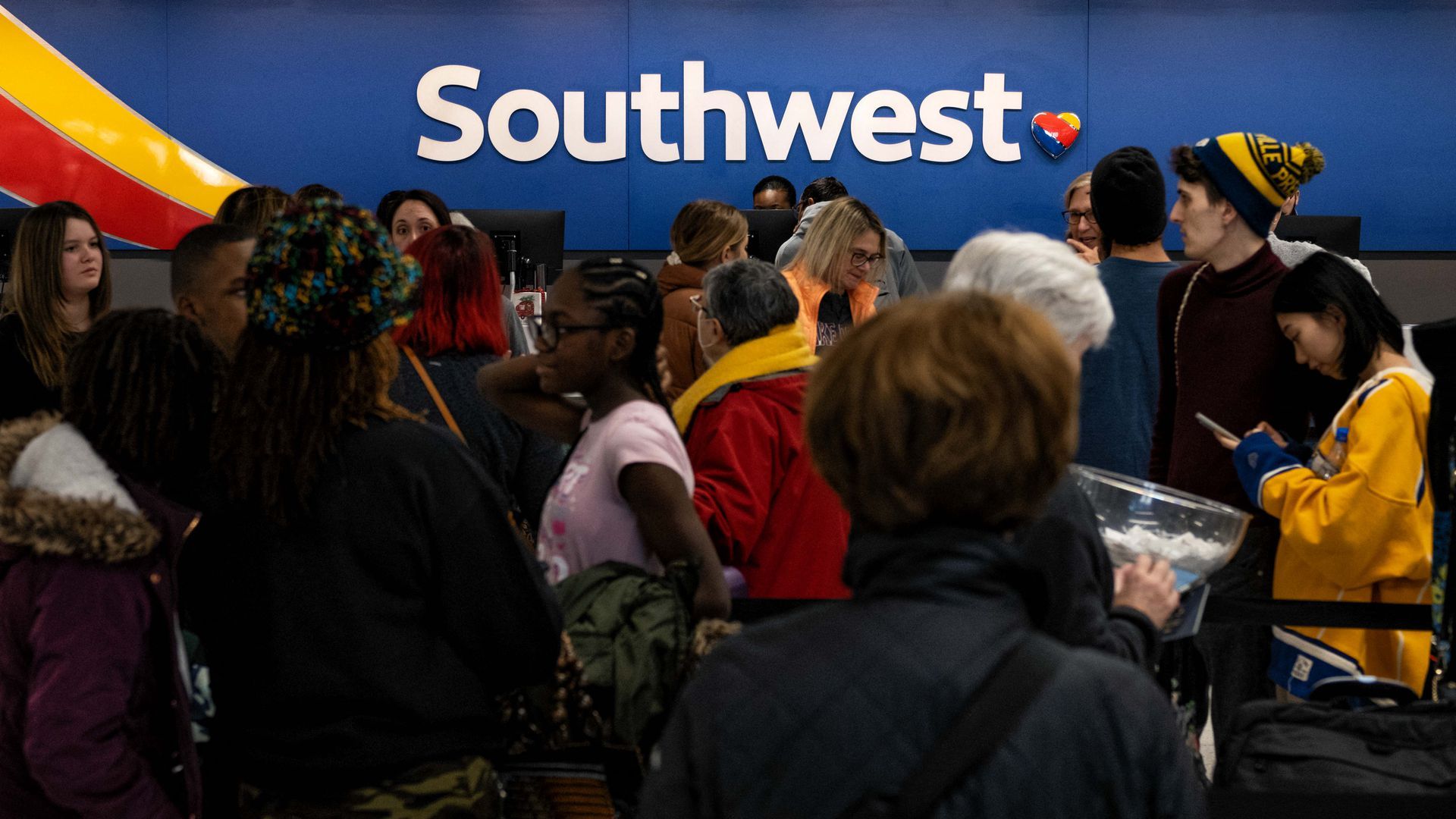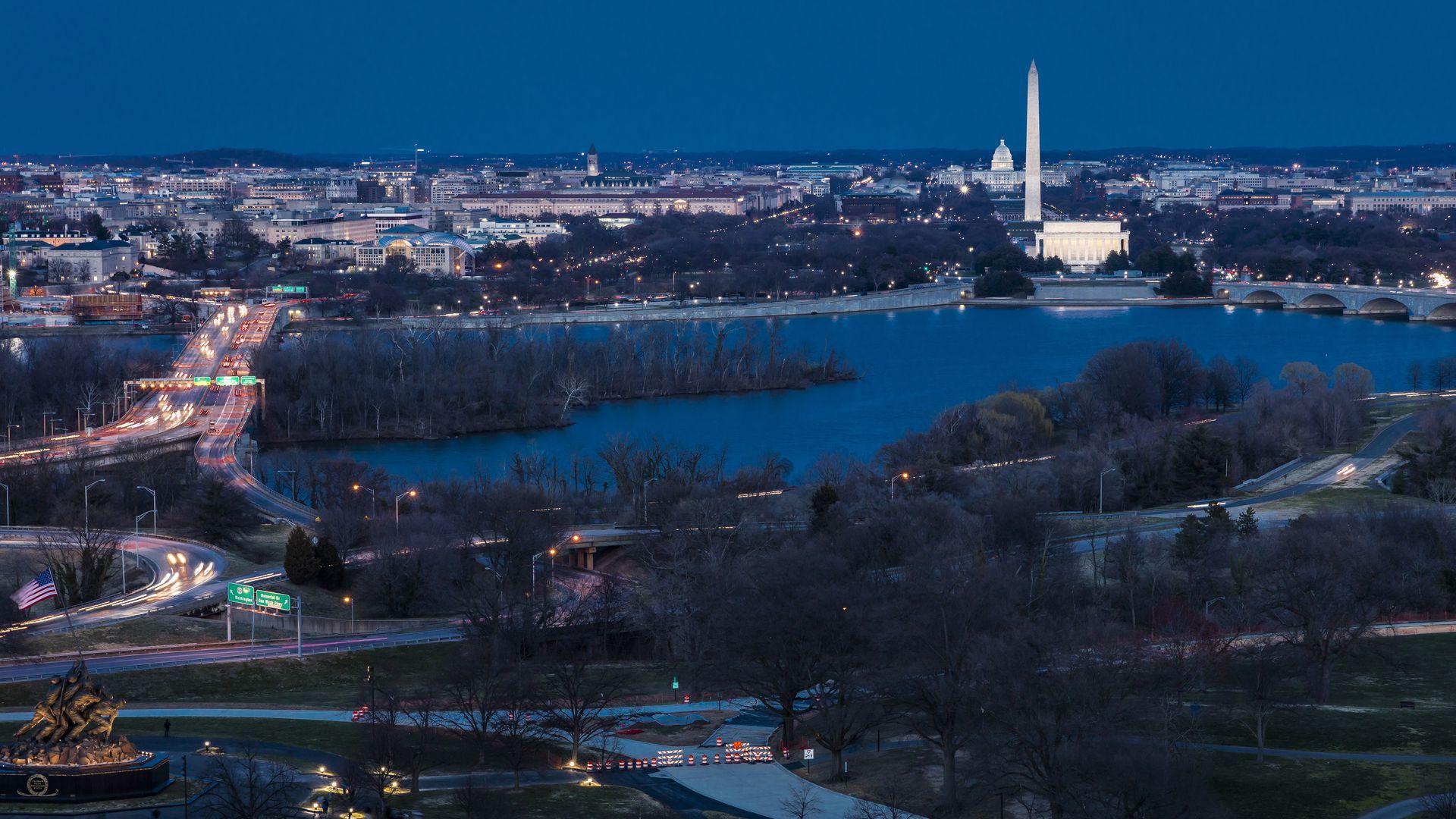| | | | | | | Presented By Deloitte | | | | Axios What's Next | | By Joann Muller, Jennifer A. Kingson and Alex Fitzpatrick · Jan 23, 2023 | | Pickup trucks have gotten huge over the last few years, a new Axios special report finds, with big implications for road safety. Today's newsletter is 1,080 words ... 4 minutes. | | | | | | 1 big thing: How pickups got so imposing |  | | | A 1970s-era Ford F-150 as compared to a modern version. Graphic: Will Chase/Axios | | | | Sales of huge pickups are sustaining carmakers, bringing in record profits — yet pedestrian and road safety advocates say today's massive trucks are a hazard, given their size, weight, and driver blind spots. - In a new Visuals special project, Axios looked back over the past 50 years to examine the societal and lifestyle changes behind pickups' ever-increasing size.
Driving the news: America has a unique love affair with pickup trucks — the Ford F-150 has been the best-selling vehicle in the U.S. for more than 40 years. But during that time, pickups have become bigger, bulkier, and more high-tech. - In the 1980s, about half of pickup trucks were categorized as small or midsize. But by the 2010s, small pickups had nearly vanished as Americans increasingly bought into the big truck lifestyle.
- As pickups transitioned from workhorses to lifestyle vehicles, their design shifted accordingly: Cabs expanded to accommodate more passengers, while beds shrank.
- The first generation of F-150s was 36% cab and 64% bed by length. By 2021, the ratio flipped, with 63% cab and 37% bed.
 Graphic: Will Chase/Axios Between the lines: Survey data from vehicle research firm Strategic Vision shows a third of today's pickup owners rarely or never use their truck for hauling, while two-thirds rarely or never use it for towing. - Instead, experts say, much of the big pickup mania is being driven by consumers' self-image.
- "Today, personality and imagery are playing an even more important role in how consumers choose which truck is right for them," Strategic Vision researcher Alexander Edwards told Axios.
- The firm surveys owners each year about the character traits they associate with their vehicle. Two words set F-150 owners apart: "powerful" and "rugged."
 Data: Strategic Vision. Chart: Will Chase/Axios Yes, but: One result of supersized trucks: greater risks to pedestrians and other drivers. - Drivers of today's trucks sit much higher, creating a blind spot where small children or wheelchair users are hidden from view.
 Graphic: Rahul Mukherjee/Axios - Moreover, pickups' weight increased by 32% between 1990 and 2021, meaning they strike pedestrians with more force.
- Plus, the tall front of a truck strikes pedestrians in the torso or head — home to vital organs — whereas the lower hoods of cars typically strike pedestrians in the legs.
- Pickups also tend to be more dangerous in collisions between differently sized vehicles — car drivers are 2.5 times more likely to die when colliding with a pickup as compared to another car, per a 2019 study.
The other side: Ford says "safety is a top priority," and points to safety-related technologies such as pedestrian detection sensors, automatic emergency braking, 360-degree cameras, and more, some of which now come standard. - Other pickup manufacturers have added similar features.
- The 2022 F-150 earned a "top safety pick" rating from the Insurance Institute for Highway Safety, and earned "good" or "superior" ratings in various crash tests, including those with other vehicles, and with child and adult pedestrians.
What's next: While they've probably maxed out in terms of size, pickup trucks are still evolving to keep up with Americans' changing lifestyles. - And now that they're going electric, many offer capabilities and bonus features that aren't available from gasoline or diesel trucks, like better torque and faster acceleration, and the ability to power a worksite, campsite, or tailgate party without burning gasoline.
See the project. |     | | | | | | 2. Southwest's plan to bring back the "luv" |  | | | A swarm of travelers at a Southwest check-in counter. Photo: Seth Herald/AFP via Getty Images | | | | Southwest Airlines is scrambling to resuscitate its reputation after its recent operational meltdown, Axios' Eleanor Hawkins reports. State of play: Now that its flight schedules are back to normal, Southwest is acknowledging, apologizing, and taking action. - President and CEO Bob Jordan has appealed directly to consumers through a flurry of apologetic emails and videos, along with refund and points updates.
- He's also briefed legislators, journalists, and industry influencers on what Southwest is doing to avoid more failures.
What they're saying: "Southwest will navigate this operationally, and communications will complement that progress from a narrative standpoint," chief communications officer Linda Rutherford told Axios. - "We can refresh and rebuild that trust among our various stakeholders by being transparent and plain-spoken in terms of what we have learned and by showing tangible results of what we will do differently as a result."
Read the rest, and subscribe to Axios Communicators. |     | | | | | | 3. Netflix's next chapter |  Data: Netflix earnings reports. Chart: Thomas Oide/Axios A major leadership shakeup at Netflix following the most tumultuous year in the company's history signals a new era for the entertainment giant, Axios' Sara Fischer writes. Why it matters: After a decade of consistent growth under co-founder Reed Hastings' leadership as chief executive, the company now must pivot its strategy to take on a more competitive and turbulent streaming landscape. Driving the news: Netflix surprised Wall Street when it announced last week that Hastings is stepping down as co-CEO and becoming executive chairman. - Netflix's other co-CEO, Ted Sarandos, will be joined by a new co-CEO: chief operating officer Greg Peters.
The big picture: Increased competition has forced Netflix to reimagine its business plan and invest in new growth areas, such as gaming, original films, and advertising. Read the rest. |     | | | | | | A message from Deloitte | | Don't just dream it — build it | | |  | | | | Unlock technology as powerful as your vision and push the boundaries of the possible with Deloitte. Our practiced human experience combined with innovative technology can help you build tomorrow — today. Let's build the future together. Learn how Deloitte can help you Engineer Advantage. | | | | | | 4. Workers sound off against non-competes |  | | | Illustration: Sarah Grillo/Axios | | | | The Federal Trade Commission has received more than 4,400 public comments as of Friday on its proposal to ban non-compete agreements — many supporting the move, Axios' Emily Peck reports. Why it matters: The comments reveal deep dissatisfaction with non-competes — and some employers are taking notice. Yes, but: Such a move would likely get watered down, delayed, or even tossed out in court. The intrigue: Regardless of where the ban lands, there's "growing hostility to the idea that there should be those kinds of restrictions, and it's changing the environment that employers have been comfortable with in the last number of years," an employment lawyer told the Wall Street Journal earlier this week. What they're saying: After reading through many of the submitted comments, we found just one opposing the ban. - "There is something distinctly un-American about baring individuals from liberty and the pursuit of happiness by limiting economic opportunities to whatever company a person happens to work for at the time," reads one illustrative comment.
The other side: Companies say non-competes keep former employees from spilling secrets, and that they promote innovation. Read the rest. |     | | | | | | 5. Could D.C. get just a little bit taller? |  | | | A view of Washington, D.C., at night. Photo: Visions of America/Universal Images Group via Getty Images | | | | There's fresh talk of tinkering with the Height Act, the federal rule that limits most Washington, D.C., buildings' height to about 13 stories, Axios' Cuneyt Dil reports. Why it matters: Depending on whom you ask, the 113-year-old rule protects the sanctity of monumental Washington — or imposes a boxy, banal skyline. Driving the news: The topic is back on officials' minds after Mayor Muriel Bowser proposed raising the height limit in some corridors from 130 feet to 160 feet. - The urgency comes with her goal to reimagine downtown by attracting 15,000 new residents by 2028.
Read the rest. |     | | | | | | A message from Deloitte | | Let's build the future together | | |  | | | | In the business world, you can either build your own future or bet on someone else's. Stay a step ahead with the latest innovations in technology and the thinking to help you transform what's next into what's now. Don't just bet on the future, build it. Learn how Deloitte can help you Engineer Advantage. | | | | Big thanks to today's What's Next copy editor, Patricia Guadalupe. Was this email forwarded to you? Get your daily dose of What's Next by signing up here for our free newsletter. |  | | Are you a fan of this email format? Your essential communications — to staff, clients and other stakeholders — can have the same style. Axios HQ, a powerful platform, will help you do it. | | | | | | Axios thanks our partners for supporting our newsletters.
Sponsorship has no influence on editorial content. Axios, 3100 Clarendon Blvd, Arlington VA 22201 | | | You received this email because you signed up for newsletters from Axios.
To stop receiving this newsletter, unsubscribe or manage your email preferences. | | | Was this email forwarded to you?
Sign up now to get Axios in your inbox. | | | | Follow Axios on social media:    | | | | | |












No comments:
Post a Comment